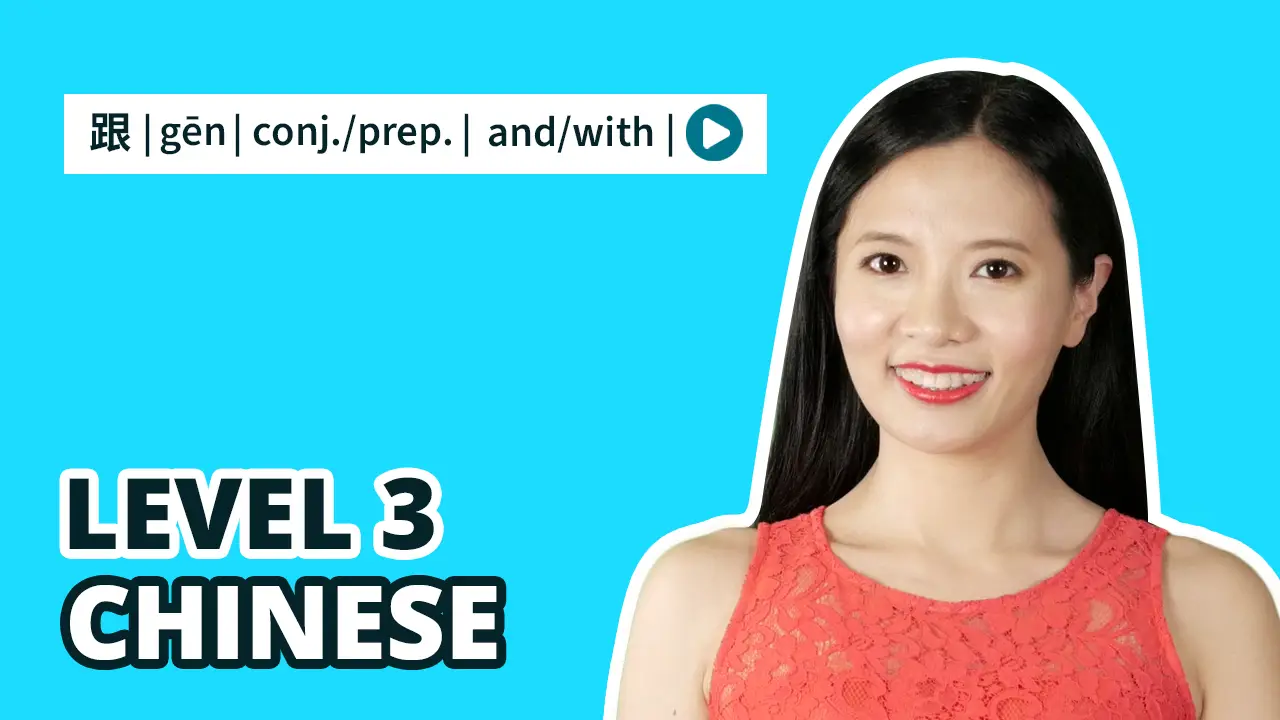Level 3 Lesson 18.2 – 墙上一共只挂着一副画。
GRAMMAR: 1. 存在句 Existential Sentences in Chinese 2. The Structure "多……,少……".
In this HSK 3 video lesson we'll learn about 存在句 Existential Sentences in Chinese and the Structure "多……,少……“.
- 存在句 (Cúnzài Jù ▸ Existential Sentences)
- 多 + v. (phrase), 少 + v. (phrase)
GRAMMAR
Grammar 1. 存在句
Cúnzài Jù▸Existential Sentences
| ☑ See also (1) Existential Sentences in Chinese with 有 (I), and (2) Existential Sentences in Chinese with 有 (II). |
We have learned Existential Sentences with 有 before, in Existential Sentences with 有, we follow this structure:
Somewhere + 有 + Something/Someone
Here "有" means "to exist", so Existential Sentences with 有 tell us that: something or someone "exists" in/on/at some place.
In today's lesson we'll learn another type of Existential Sentence, we follow this structure:
Somewhere + v. + Something/Someone
This type of Existential Sentences also indicate that someone or something "exists" in/on/at some place. But we use a specific verb to tells us more information about in what way or in what manner the item or person exist in that place.
For example,
Chuán shang kěyǐ zuò liù ge rén.
船上可以坐六个人。
(There) can (be) six “ge” (of) people “sit” (on the) boat-surface.
Usually the verbs are followed by Particles 着, 了, 过 indicates the Aspect of the Verb:
Somewhere + v.着 / v.了 / v.过 + Something/Someone
For example,
- Bīngxiāng li fàng zhe yì bēi pútaozhī.
冰箱里放着一杯葡萄汁。
(There is) one cup (of) grape-juice “being putting” (in the) inside (of the) refrigerator. [ ㊟ the juice is being put there at the moment, because 着 indicates “in progress and continuing”] - Nàbiān zhàn le yí wèi niánqīng de ’āyí.
那边站了一位年轻的阿姨。
(There is) one “wei” (of) young auntie “having been standing” (over) there. [ ㊟ as opposed to no one sitting there, because 了 indicates the completion of an action/event] - Zhè miàn qiáng shang guà guo yì fú huà.
这面墙上挂过一幅画。
(There used to be) one “fu” (of) painting “(once) was hung” (on) this “mian ”(/surface) (of the) wall-surface. [㊟ the painting is not hanging there anymore, because 过 indicates “something ever happened before”]
Grammar 2. 多……,少……。[ 多 + v.(phrase), 少 + v.(phrase) ]
Duō……,shǎo……。 ▸ To do... more, (and) to do... less.
In this structure, 多 and 少 are used as the Adverbial to modify the verb (phrases) following them.
- 多 suggests "to do something" more
- 少 suggests "to do something" less
(1) "多……,少……" used together
- Wǒ dǎsuàn yǐhòu duō yùndòng, shǎo wánr diànnǎo.
我打算以后多运动,少玩儿电脑。
I plan to (in the) future exercise “more (frequently)”, (and) play computer “less (frequently)”. - Zuò zhè dào cài yào duō fàng táng, shǎo fàng yán.
做这道菜要多放糖,少放盐。
Making this “dao” (of) dish requires putting-in sugar “more (in amount)”, (and) putting-in slat “less (in amount)”.
(2) "多……" used alone
- Wǒ zhǐ xīwàng nǐ néng duō lǐjiě wǒ yì xiē.
我只希望你能多理解我一些。
I just hope (that) you can understand/sympathize me (to the extent of)-some “more”. - Zhè cì kǎoshì hěn nán, wǒ děi duō zhǔnbèi yí xià.
这次考试很难,我得多准备一下。
(The) test this time (is) very difficult, I need to prepare “really quick” “more”.
(2) "少……" used alone
- Nǐmen yǐhòu shǎo chǎojiào, háizi tīngdào le bù hǎo.
你们以后少吵架,孩子听到了不好。
You guys (in the) future verbally-fight “less”, (the) kids hearing (it) (is) not good . - Nǐ dōu yǒu xīn nánpéngyou le, wǒmen yǐhòu shǎo jiànmiàn ba.
你都有新男朋友了,我们以后少见面吧。
You already have (a) new boyfriend, (let) us meet “less” (in the) future.
